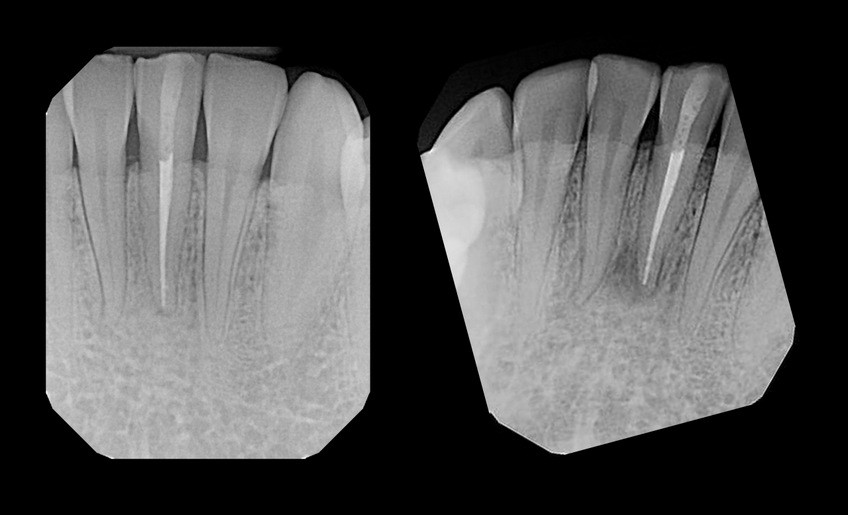Root canal therapy is needed when the nerve of a tooth is affected by decay or infection. In order to save the tooth, the pulp (the living tissue inside the tooth), nerves, bacteria, and any decay are removed and the resulting space is filled with a special root medicated filling called gutta percha and sealer.
A final crown over the root canal will restore the tooth into its full function. A final crown is important to seal away bacteria from reinfecting the root canal system, and to prevent the weakened tooth from fracturing.
Having a root canal done on a tooth is the treatment of choice to save a tooth that otherwise would die and have to be extracted. Many patients believe that removing a tooth is the easiest and cheapest solution, but what is not realized is that the overall cost to replacement a missing tooth is more costly than a root canal. The adjacent teeth also suffer from shifting, misalignment, and collapsing bone structure due to a missing tooth.
In most cases, root canal therapy is successful, although on occasion, a tooth will have to be retreated due to new infections. You can expect soreness after a root canal procedure for a few days to a week that can be managed with over the counter or prescription pain killers. You should avoid chewing on the side of your mouth where the procedure was performed so you do not irritate the area and also to ensure that the temporary restorative material properly sets. If there was a prior infection/swelling/fever, expect the symptoms to linger for a few days until the antibiotics and medicine in your tooth treats the infection. Sometimes an abscess/swelling will need to be drained if the infection is severe. If you notice an increasing amount of pain or tenderness, a reaction to the medication, or the loss of the temporary restoration (filling) call your dentist immediately. It is not unusual for the tooth to feel different after the root canal has been completed but is typically not painful.

